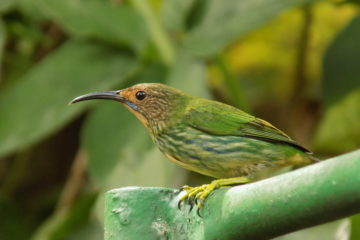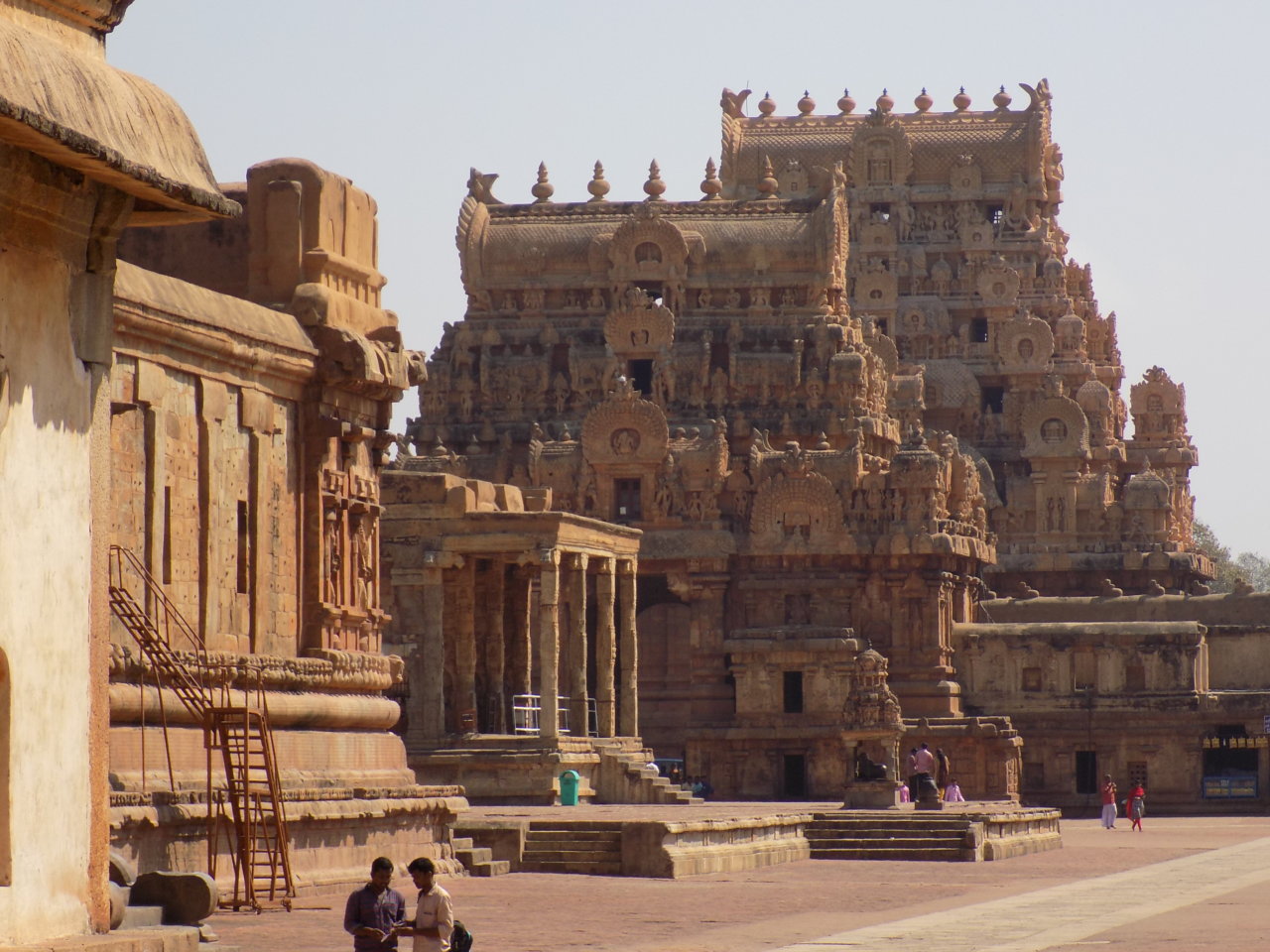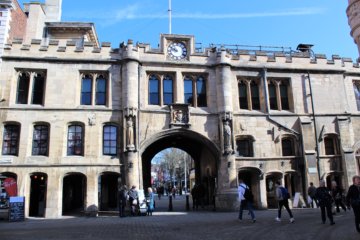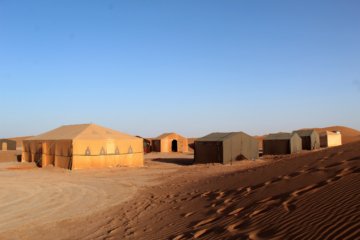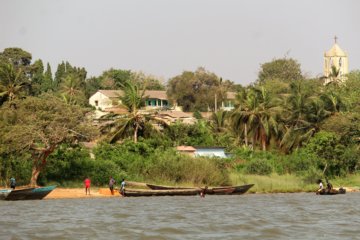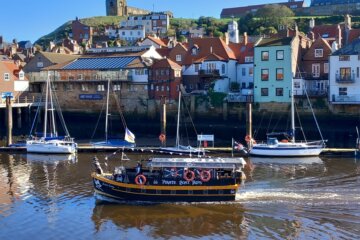Any visit to Johannesburg should include a tour of Soweto, the largest township in South Africa, with a local guide. I urge you to put any worries you might have about the ethics of ‘township tourism’ (also known as slum tourism, poverty tourism, or ghetto tourism) to one side. As long as you book through one of the many reputable tour operators and make sure that any money you spend is going directly to local people, then, in our experience, visiting places like the township of Soweto is beneficial to you and the people who live there.

I was really looking forward to our tour of Soweto. The place has been in my consciousness since I was a teenager and first became aware of the struggle against apartheid. I had an idea of what Soweto would be like, and I was interested in seeing how the reality compares.
Read on for a description of our visit and my take on the best things to do in Soweto.
In this article
The Soweto Tour we Booked
We chose to book a tour of Soweto through the City Sightseeing Bus Company. Doing it this way, we took the red route to Gold Reef City where we transferred to a minibus with a driver and guide, both of whom were residents of the township with a wealth of knowledge and experience to share with us. As well as visiting the main sites in Soweto as part of the tour, we also had the opportunity to spend an extra couple of hours there to have lunch in a local restaurant and to wander around independently before hopping on the next minibus to return to Gold Reef City.
Our guide, DT, was from the Orlando East District of Soweto. He was brilliant! On the way to the township, he told us about the city, the people of Soweto, and his experience of growing up, living, and working there.
You can book the same tour here.
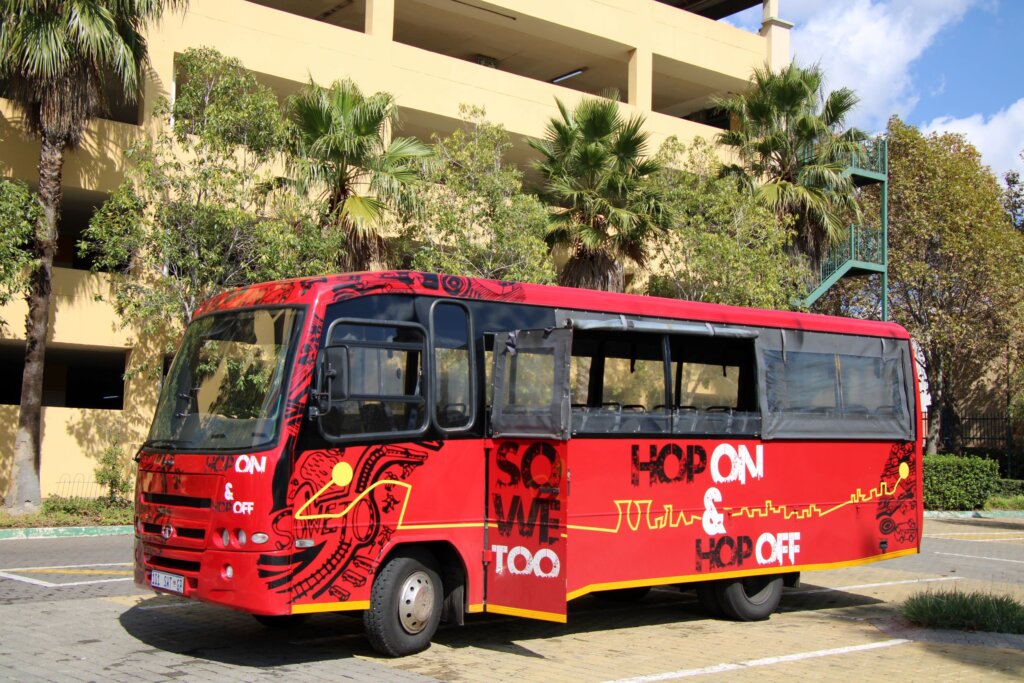

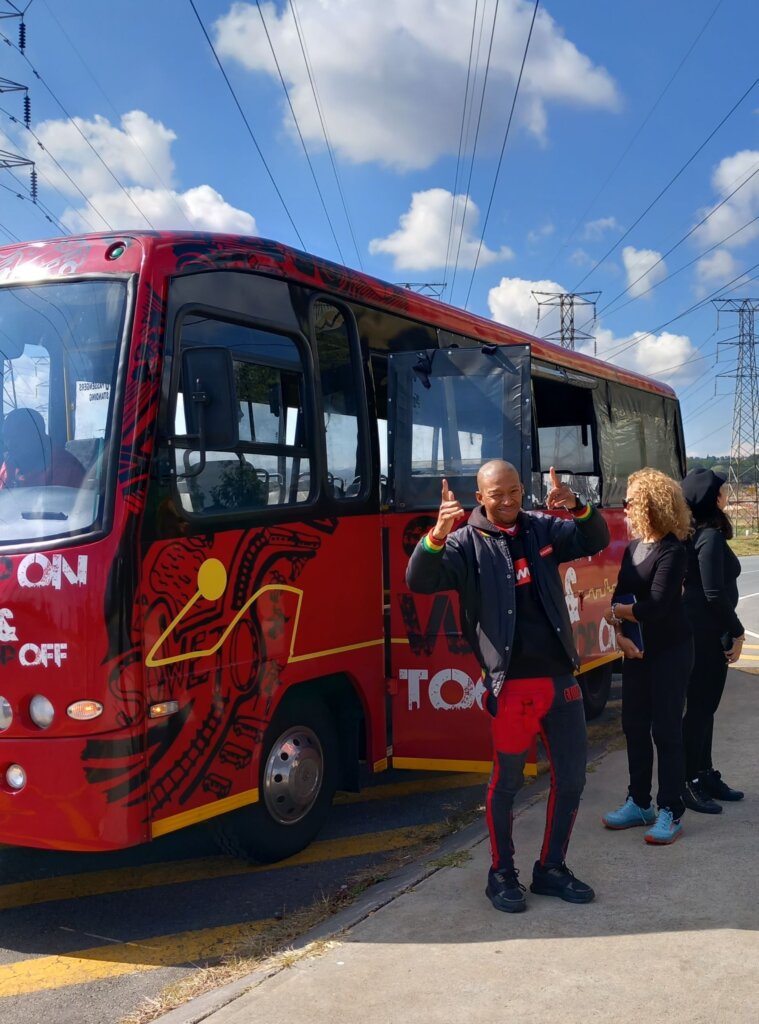
A Brief History of Soweto
Soweto (South Western Townships) was created in the 1930s when the white government started separating blacks from whites. Blacks were moved away from the city to an area south-west of Johannesburg. This area was separated from white suburbs by a so-called cordon sanitaire or sanitary corridor made up of undeveloped fields and wasteland. This relocation was carried out using the infamous Urban Areas Act of 1923.
There was already an informal settlement on the site of present-day Soweto. It was a legacy of Johannesburg’s gold-mining and brick-manufacturing history when 100,000 people had descended on the area seeking their fortunes. A huge number of ramshackle homes had been built. The city developed randomly with no infrastructure and little organisation.
Over time, Soweto became the largest black city in South Africa, but until 1976, its population could only have status as temporary residents, serving as a workforce for Johannesburg. The city experienced civil unrest during the time of the Apartheid government. There were serious riots in 1976, sparked by a ruling that Afrikaans be used in African schools there. The Soweto uprising was violently suppressed, with 176 striking students killed and more than 1,000 injured. Reforms followed, but riots flared up again in 1985 and continued until the first non-racial elections were held in April 1994.
Soweto Today
Today, Soweto covers an area of over 200 square kilometres and is home to over 1.5 million people. The population is still predominantly made up of black South Africans (98.5%), and the first language of the township is Zulu. The city has 200 schools and is beginning to break its reliance on Johannesburg as its main source of employment. Businesses are growing within the township.
Having said this, many of Soweto’s residents are amongst the poorest in South Africa, earning on average a quarter of their compatriots living in Johannesburg. There are, however, some wealthier Sowetans, as shown in the number of larger, newly-built houses. Walking around the township, it is obvious when you cross from the poor areas to the middle-class areas, and then to the richer areas. The contrasts are stark. It is worth noting, though, that even the richest Soweto residents would not be able to afford housing elsewhere in Johannesburg. They may be the wealthiest citizens in the township, but they are still not able to leave, even if they want to.


Soweto is mostly composed of old “matchbox” houses, four-room houses built by the government to provide cheap accommodation for black workers during apartheid. Many people who still live in matchbox houses have improved and expanded their homes, and the City Council has enabled the planting of more trees and the improvement of parks and green spaces in the area.
Hostels are another prominent feature of Soweto. Originally built to house male migrant workers, many have been improved as dwellings for couples and families.

The result of all this is that our first impressions of Soweto were that it is much more gentrified than we expected. Look below the surface, though, and you will see the poverty and catch sight of those who still live in makeshift accommodation. DT told us that these people are mostly illegals or drug addicts. He suggested that the problems Soweto has today are the same as any large city anywhere in the world. For him, it is home, and the strong sense of community he has with his neighbours means that he would never want to live anywhere else.
Places to Visit in Soweto
Soweto township is home to several important historical sites. It is well worth spending a full day there.
Orlando Towers
The first stop on our township tour was at the famous landmark, Orlando Towers.
Orlando Power Station is a decommissioned coal-fired power station. The power station was built at the end of the Second World War and served Johannesburg for over 50 years.
Today, the cooling towers have been painted, one functioning as an advertising billboard and the other displaying the largest mural painting in South Africa. The towers are also used for bungee and base jumping from a platform between the top of the two towers, as well as a bungee swing into one of the towers – if you’re crazy enough!

Hector Pieterson Museum and Memorial
Our next stop was at the Hector Pieterson Memorial. Here, we had an expert guide who told us the familiar story of how Hector, aged 12, was shot and killed during the Soweto student uprising when the police opened fire on young black people protesting the enforcement of teaching in Afrikaans. A news photograph by Sam Nzima of the mortally wounded Hector being carried by another Soweto resident while his sister ran next to them was published around the world. The anniversary of his death is designated as Youth Day in South Africa.
Our guide pointed out Hector’s sister, who also works as a tour guide, with a group of American tourists. How gruelling must it be for her to relive that terrible incident every day?

Vilakazi Street
From the museum, we drove down Vilakazi Street, renowned for its historical significance and cultural richness. It is the only street in the world that has been home to two Nobel Prize winners, former president Nelson Mandela and Archbishop Desmond Tutu.
Nelson Mandela’s House
We visited Mandela House, the former home of Nelson Mandela, and probably the most famous tourist attraction in Soweto. He lived here from 1946 to 1962. It is a typical four-room ‘matchbox’ house.
Mandela donated the house to the Soweto Heritage Trust in 1997 to be used as a museum. The single-story red-brick house has been extensively restored, but it still has bullet holes in the walls, and the facade has scorch marks from police attacks with Molotov cocktails. Inside, there are some original furnishings and memorabilia, including photographs, citations given to Nelson Mandela, and the world championship belt given to Mandela by Sugar Ray Leonard.
It was fascinating, and really quite moving, to be inside Nelson Mandela’s home. This is the place he came to when he was released from prison in 1990, despite suggestions from government officials that he should find a safer home. At a rally welcoming him home to Soweto, his opening words were, “I have come home at last.” However, after 11 days back at the house, he moved out again on the advice of his security officials.
He later wrote in his autobiography:
‘That night I returned with Winnie to No. 8115 in Orlando West. It was only then that I knew in my heart I had left prison. For me, no. 8115 was the centre point of my world, the place marked with an X in my mental geography.’
I feel privileged to have been in the rooms he inhabited.

Walter Sisulu Square
Formally known as the Walter Sisulu Square of Dedication, this square is located in the heart of Kliptown, Soweto.
It is a hugely significant location in the history of South Africa. On 26 June 1955, the Congress of the People met here to draw up the Freedom Charter, an alternative vision to the repressive policies of the apartheid regime. The document emphasised a non-racial society, liberty and individual rights. The Freedom Charter remains the cornerstone of African National Congress policy and is seen by many as the foundation of South Africa’s 1996 constitution.
The square is named after Walter Max Ulyate Sisulu, a political activist during the apartheid era who was a member of the African National Congress and who served as Secretary-General and Deputy President of the organisation. He was released from prison in 1989 after serving more than 25 years.
In 2024, the square became a World Heritage Site. Today, the square’s features include an open-air museum that explains how the Freedom Charter was written as a collaborative effort by thousands of South Africans of all races. The conical brick tower at the centre of the square is a monument to the document itself and contains the full principles of the Charter engraved in bronze.
Soccer City Stadium
Standing proud in the heart of Soweto, Soccer City Stadium (also known as Orlando Stadium or FNB Stadium) is more than just a sports venue. It’s a pulsating symbol of community spirit and resilience. Originally built in 1959, this iconic stadium was redesigned in 2010 with a sleek, modern steel frame, increasing its seating capacity to 94,000, making it the largest stadium in South Africa. The striking architecture, based on the shape and earthy colour of a traditional calabash or cooking pot, seamlessly blends the old with the new, echoing the vibrant culture of Soweto.
As the home ground of the legendary Orlando Pirates, the stadium has witnessed countless exhilarating matches, where the roar of the crowd becomes a living entity, surging with energy and passion.
During the 2010 FIFA World Cup, this stadium was selected as the venue for the final, adding another chapter to its rich history.

Things to Do in Soweto
Discover the Work of Township Artists
Dive into the creative side of Soweto. The monthly art and craft market held outside the Soweto Theatre showcases local talent.

Enjoy a Traditional Music Performance
Check out an afternoon performance at the Soweto Theatre. Experience the soulful rhythms and melodies that tell the stories of the land.
Ticket prices vary – check their schedule in advance.

Take a Bike Tour of Soweto
Enjoy an exhilarating bike tour. Companies like Soweto Outdoor Adventures offer guided tours through the township, letting you soak in the daily life and vibrant energy.
Cost: approximately ZAR 500 per person.
Visit one of Soweto’s Bustling Markets
The most famous of these is the Maponya Mall Market. Grab some street food (be sure to try amagwinya (vetkoek) and kota, a tasty township sandwich) and maybe a souvenir or two.
Find Things to Do in Soweto
Where to Stay in Soweto
Whilst most visitors to Soweto arrive from Johannesburg and spend just a few hours there, it is possible to stay in the township itself in order to gain a deeper understanding of the place and its people.
Here are some recommendations:
Lebo’s Soweto Backpackers – a very popular Soweto hostel that offers private rooms as well as beds in dorm rooms. Among the facilities of this property are a restaurant, a bar, a shared kitchen, free bike hire, parking, a garden, a shared lounge, and a tour desk, along with free WiFi.
Russell’s Rest Rooms – this newly- renovated apartment block offers free secure parking. Every unit includes a private bathroom and a hot tub. Some units can accommodate families.
Black Rose Guesthouse – this property offers access to a patio, free private parking and free WiFi. Each unit has a balcony, a fully equipped kitchenette with a microwave, a dining area, and a seating area with a flat-screen TV, while the private bathroom includes a walk-in shower and free toiletries.
4447 Guesthouse – this recently renovated accommodation has free WiFi and a terrace.
Mndazi Manor – this 3-bedroom villa has a kitchen with an oven and a microwave, a flat-screen TV, a seating area, a garden, private parking, free wi-fi, and 3 bathrooms fitted with a bath.
Flossie B & B – this lovely guest house has a sun terrace, free WiFi, private parking, and bicycle hire. Some rooms are air-conditioned and have a coffee machine. Full English/Irish and vegetarian breakfast options are available every morning. Packed lunches can be provided on request.
Where to Eat in Soweto
There are many restaurants in Soweto offering menus to suit all budgets. Be sure to support one of the locally-owned eateries before dashing back to the city of Johannesburg.
Wandies Place – enjoy a memorable dinner at this iconic eatery. Relish authentic dishes in a welcoming, communal atmosphere. Sample everything from oxtail stew to chakalaka (average cost – ZAR 200 per person).
Chaf Pozi – savour the smoky flavours of a classic South African braai. Enjoy hearty portions with a side of local music (average cost – ZAR 250 per person).
Vilakazi Restaurant – try traditional dishes like pap and vleis (meat) in a vibrant setting (average cost – ZAR 150 per person).
Lebo’s Soweto Backpackers – sample local favourites in a lively atmosphere (average cost – ZAR 120 per person).
Sakhumzi Restaurant – the vibrant atmosphere perfectly complements a hearty plate of traditional South African dishes like umngqusho (samp and beans) and braai meat, all for about $10 to $20.
Insider tip: Pair your meals with a refreshing glass of umqombothi, a traditional beer, and don’t miss the chance to join a communal dining experience where sharing stories is as important as sharing food. These culinary adventures are not just about eating – they’re a gateway into the heart and soul of Soweto’s culture.
Watch this Video for Further Insights into Soweto
If you’re travelling soon, please use these links!
Are you travelling soon? Use these links when making your bookings. These are the companies we use. It won’t cost you any extra, but we will earn a few pennies to help keep Happy Days Travel Blog going. Thank you!!
- Book your travel insurance with World Nomads. If you are a digital nomad or long-term traveller, try the specialist provider SafetyWing. (Never leave home without protecting yourself, your trip and your belongings!)
- Book your flight with Skyscanner
- Book your accommodation with Booking.com
- Book a tour with Tour Radar
- Book city tours and activities with Viator or Get Your Guide
- Check out our Resource Page for more companies we recommend.
Disclosure: This post contains affiliate links. If you click through for more information, or to make a purchase, it may result in a small commission coming my way. Please note that there is no extra cost to you associated with this. Thank you so much for supporting my site.
Join our mailing list

Sign up to receive our monthly newsletter. Keep up with what we're doing and be the first to receive special offers and insider tips.


